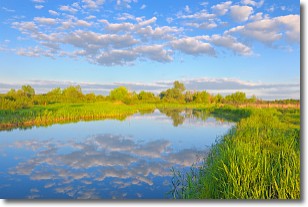Weather Alert in Michigan
Air Quality Alert issued July 13 at 11:54AM EDT by NWS Grand Rapids MI
AREAS AFFECTED: Mason; Lake; Osceola; Clare; Oceana; Newaygo; Mecosta; Isabella; Muskegon; Montcalm; Gratiot; Ottawa; Kent; Ionia; Clinton; Allegan; Barry; Eaton; Ingham; Van Buren; Kalamazoo; Calhoun; Jackson
DESCRIPTION: The Michigan Department of Environment, Great Lakes, and Energy (EGLE) has issued an Air Quality Alert for elevated levels of fine particulate (PM2.5) for Sunday July 13th through Monday July 14th. Pollutants across the state are expected to reach the Unhealthy (Red AQI) to USG (Orange AQI) range in northern locations, with ranges of USG to Moderate further south. The Air Quality Alert Sunday and Monday is statewide. Wildfire smoke from Canada continues to push into Michigan on Sunday, with additional plumes expected Monday. Increased fine particulate levels due to smoke are being seen Sunday morning across the Upper Peninsula into the northern portion of the Lower Peninsula. The smoke will continue tracking east and south, expanding across the rest of the state as Sunday progresses, and additional plumes are forecast to move in on Monday. The highest fine particulate concentrations will be seen in northern areas with periods of Unhealthy AQI possible. Central locations could see readings ranging from Unhealthy to USG, and southern locations can expect levels of fine particulate in the USG to Moderate range. It is recommended that, when possible, you avoid strenuous outdoor activities, especially those with heart disease and respiratory diseases like asthma. Monitor for symptoms such as wheezing, coughing, chest tightness, dizziness, or burning in nose, throat, and eyes. Reduce or eliminate activities that contribute to air pollution, such as: outdoor burning; use of residential wood burning devices. Tips for households: Keep windows closed overnight to prevent smoke from getting indoors and, if possible, run central air conditioning with MERV-13 or higher rated filters. For further information, please see EPA's Air Now site for up to date air quality data at https://www.airnow.gov
INSTRUCTION: N/A
Want more detail? Get the Complete 7 Day and Night Detailed Forecast!
Current U.S. National Radar--Current
The Current National Weather Radar is shown below with a UTC Time (subtract 5 hours from UTC to get Eastern Time).

National Weather Forecast--Current
The Current National Weather Forecast and National Weather Map are shown below.

National Weather Forecast for Tomorrow
Tomorrow National Weather Forecast and Tomorrow National Weather Map are show below.

North America Water Vapor (Moisture)
This map shows recent moisture content over North America. Bright and colored areas show high moisture (ie, clouds); brown indicates very little moisture present; black indicates no moisture.

Weather Topic: What is Sleet?
Home - Education - Precipitation - Sleet
 Next Topic: Snow
Next Topic: Snow
Sleet is a form of precipitation in which small ice pellets are the primary
components. These ice pellets are smaller and more translucent than hailstones,
and harder than graupel. Sleet is caused by specific atmospheric conditions and
therefore typically doesn't last for extended periods of time.
The condition which leads to sleet formation requires a warmer body of air to be
wedged in between two sub-freezing bodies of air. When snow falls through a warmer
layer of air it melts, and as it falls through the next sub-freezing body of air
it freezes again, forming ice pellets known as sleet. In some cases, water
droplets don't have time to freeze before reaching the surface and the result is
freezing rain.
Next Topic: Snow
Weather Topic: What are Stratocumulus Clouds?
Home - Education - Cloud Types - Stratocumulus Clouds
 Next Topic: Stratus Clouds
Next Topic: Stratus Clouds
Stratocumulus clouds are similar to altocumulus clouds in their
fluffy appearance, but have a slightly darker shade due to their additional mass.
A good way to distinguish the two cloud types is to hold your hand out and measure
the size of an individual cloud; if it is the size of your thumb it is generally
an altocumulus cloud, if it is the size of your hand it is generally a
stratocumulus cloud.
It is uncommon for stratocumulus clouds to produce precipitation, but if they do
it is usually a light rain or snow.
Next Topic: Stratus Clouds
Current conditions powered by WeatherAPI.com




